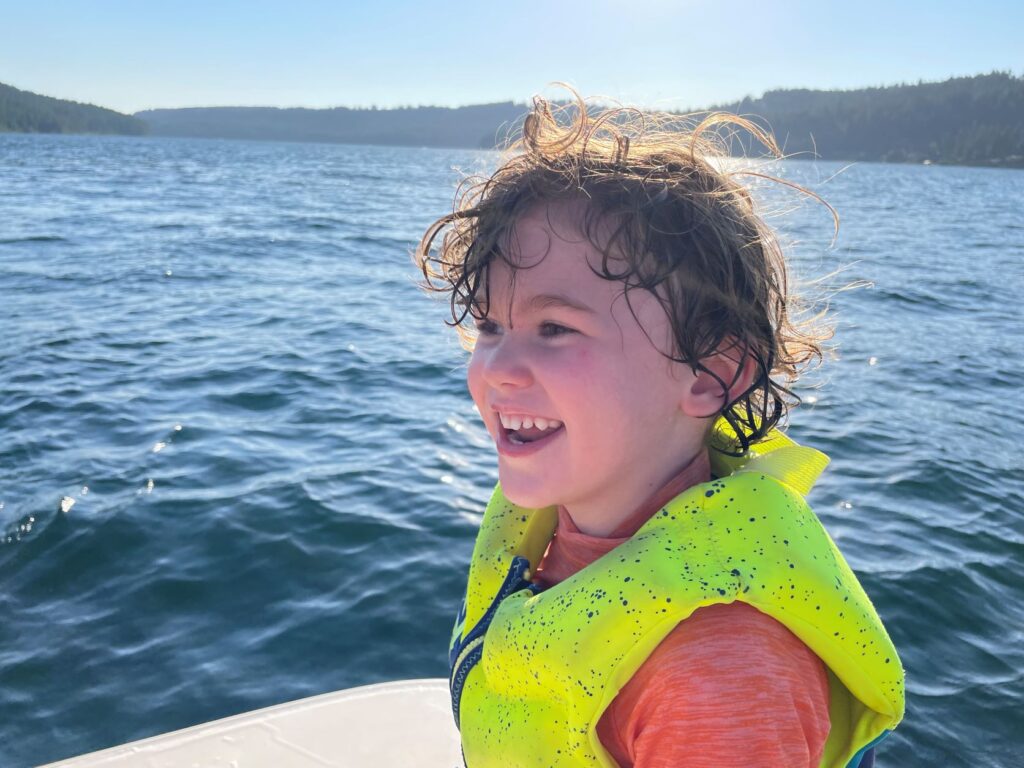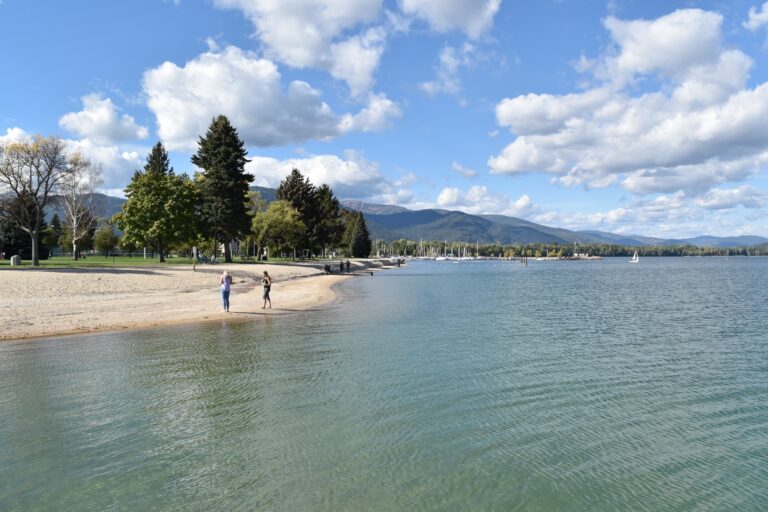Every year in the Northwest, especially during summer, drownings (and near-drownings) happen in the region’s lakes and rivers. From beginner to experienced swimmers and watersport recreationists, it’s vital to know how to swim safe at a lake.
Drowning is silent, not the Hollywood version of splashing and screaming. When water enters a person’s nose and mouth and then airway, they can’t speak or call for help.
Drowning can also happen fast—in less than a minute, for a child. It’s the number one cause of death for children under age five. According to Stop Drowning Now, a water safety advocacy group, 88 percent of those drownings take place with at least one adult present.
Signs indicating distress include a person swimming ineffectively or bobbing in water in an uncoordinated way; unable to keep their head above water; unable to talk or yell; attempting to roll onto their back but being unsuccessful; and/or displaying a panicked facial expression.
At rivers and lakes, most drowning victims are teens and young adults (age 15-25). Even for those who know how to swim, prolonged immersion in cold water—any water less than 70 degrees Fahrenheit, which applies to all Northwest lakes and rivers—can lead to fatigue and hypothermia.
Spent energy and exhaustion can prevent people from keeping their head above water or make them too tired to shout for help. Head injury or other trauma (e.g. from cliff jumping, rope swinging) can also render a person unconscious and unable to stay above water.

Personal Flotation Devices (PFDs)
No one is ever too old (or too cool) to wear a life jacket. Even though I worked as a lifeguard for eight years and was a competitive swimmer, I still wear a PFD whenever swimming in a lake or river.
According to the experts from NRS (Northwest River Supplies), based in Moscow, Idaho, “In the event of an on-the-water emergency, you won’t be able to help your child if you’re struggling to stay afloat. Besides, wearing your own life jacket demonstrates that safety is important to you. And what’s important to you will seem important to your child.”
Laws require children to wear a PFD whenever aboard a vessel (age limits vary), including any non-motorized paddle craft, like a kayak or stand-up paddleboard. (NRS and REI have online advice for PFD fitting.)
Additionally, children should wear PFDs whenever in or near water, including on a dock or riverbank. Experts also advise those age five and younger to wear a PFD whenever on a beach.
Cold Water Shock
Sudden immersion in cold water, whether from falling off a dock (or intentionally jumping off) or because of an overturned watercraft, causes a gasp reflex, which can allow water into the airway. Gasping underwater risks inhaling water.
The initial shock of cold water immersion causes “involuntary gasping, hyperventilation, vertigo, and panic,” according to the Washington State Parks’ webpage for boating safety, and can last 3-5 minutes.
This can lead to suffocation by drowning (when water enters lungs) or cause a laryngospasm, when the larynx involuntary closes and inhibits breathing, which can cause “dry drowning,” an event when no water enters the lungs. For laryngospasm self-rescue, exhale to relax larynx and open airway by arching/tilting back head.
Hyperventilation (over-breathing), whether from cold water shock or overexertion, lowers the body’s carbon dioxide levels and can lead to a loss of consciousness or force a person to take a breath while submerged.
Wearing a PFD prevents a person from staying underwater and allows for a quicker rescue. Which makes it the best way to swim safe at a lake (or other open-water area like a river or ocean), no matter the age or swim-skill level of a person.
Water Rescue At A Lake: Reach, Throw, Row, Go
Adrenaline and instinct can prompt a rescuer to go into the water. But would-be rescuers risk becoming drowning victims themselves unless they are prepared.
Experts advise following these 4 steps for a rescue, should you need to attempt one (applied here to a lake setting when a distressed swimmer isn’t wearing a PDF):
- Reach: Extend an arm, paddle, or other object (brace yourself to prevent being pulled into deep water).
- Throw: If too far away to reach, throw a floatation item to the person in distress.
- Row: For rescues from a farther distance, paddle/boat to the person and then perform steps 1-2.
- Go: As a last resort, swim to the victim (while wearing a PFD yourself). It can be a good idea to take along a flotation device to help them stay afloat until a rescue boat arrives.
Water Safety Checklist For Lake Swimming
Here are 3 key ways to minimize drowning risks in any swim setting, from StopDrowningNow.org. These are vital whenever at a lake, whether it’s a public park, private residence, or remote setting.
- Designate a “Water Watcher”: undistracted (and completely sober) supervising adult who remains within arm’s length of swimmers at all times.
- Remove toys from the water’s edge when not in use.
- Have an emergency action plan: SDN recommends teaching children to “Reach or throw, don’t go! Let someone know!” Caregivers should all know how to swim and provide CPR.
For further reading: “Water Safety for Lakes, Rivers, and Beaches” from Washington State Department of Health; “Open Water Safety Checklist” (lakes, rivers, oceans) from Safe Kids Worldwide.
Amy McCaffree is Out There Kids columnist and enjoys paddling and swimming with her family.













